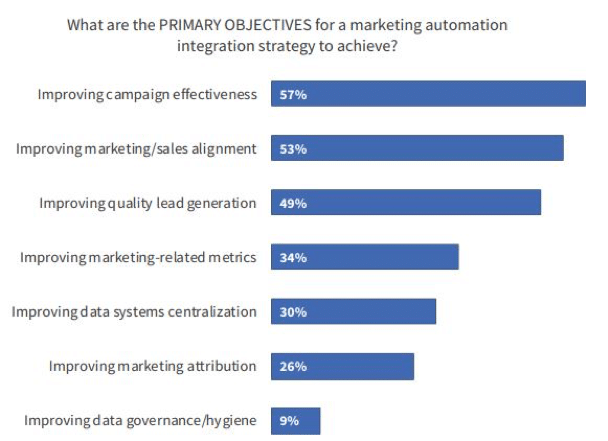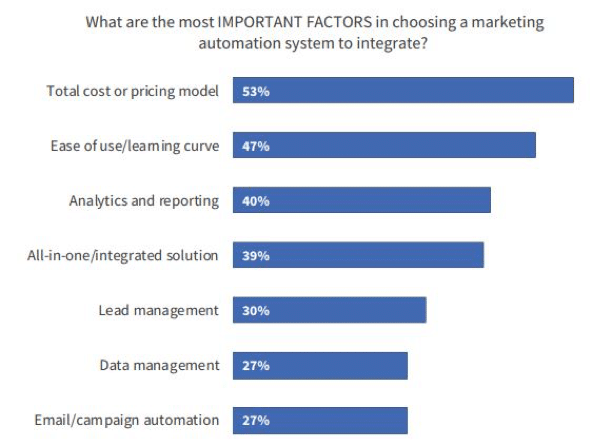Marketing automation is a powerful tool used to make marketing tasks, processes, and campaigns faster and more efficient than ever before.
But how are marketers integrating this technology into their overall strategy?
Ascend2’s research study, Marketing Automation Integration, answers the question of how marketing professionals are using marketing automation to achieve specific marketing objectives. The research also provides insight on how to maximize the investment that you’ve made on marketing automation tools.
The Marketing Automation Integration Survey Summary Report provides insight into difficult questions like:
- What are the primary objectives for a marketing automation integration strategy to achieve?
- What is a reasonable time-frame for realizing the benefits of marketing automation integration?
- How many companies are Best-in-Class?
- What are the most critical challenges to the success of a marketing automation integration strategy?
- How are budgets changing to integrate marketing automation into your overall strategy? NOTE: This information will help you make the argument to get more budget.
- How do I prioritize objectives versus challenges as I build my marketing integration strategy?
- What are the most important factors in choosing a marketing automation system to integrate?
- What are the most important metrics for measuring the benefits of marketing automation integration?
- What best describes the resources used to integrate marketing automation? In-house? Outsourced? Combination of in-house vs. outsourced?
Here area few noteworthy findings for the Asend2 research study:
Finding #1: Primary Objectives
Improving campaign effectiveness and improving marketing and sales alignment are top primary objectives for a marketing automation integration strategy to achieve according to 57% and 53% of marketing professionals surveyed, respectively. Nearly half (49%) of those surveyed report that improving quality lead generation is also a top priority.

Finding #2: How Total Budget is Changing
Almost one-quarter (23%) of marketing professionals surveyed report that the time, resources, and expenses dedicated to integrating marketing automation into their overall strategy will increase significantly. Only 13% say that their total marketing automation integration budget will decrease to some extent.

Finding #3: Important Factors for Integration
According to 53% of marketers surveyed, total cost or pricing model is the most important factor in choosing a marketing automation system to integrate. For 47% of marketing professionals, the ease of use and learning curve is also important to consider when deciding which system to integrate into an overall strategy.

Finding #4: Time Frame for Realization of Benefits
Getting a marketing automation system integrated and running it efficiently can take time. Over half (54%) of marketers believe that 6 to 12 months is a reasonable time frame for realizing the benefits of a newly integrated marketing automation system. Over one-third believe that results should be seen in 6 months or less.

Download the Marketing Automation Integration Survey Summary Report and put it to work in your own marketing strategy.
